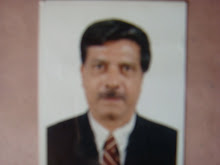





SAVE SONARGAON AND PANAM NAGAR
===================================
These historical sites Sonargaon and Panam Nagar are in danger of being lost for lack of coordinated programmes to protect them,"
According to me, Sonargaon as a historical place that bears many symbols of archaeological development of ancient Bengal and the authorities concerned should protect these for the next generation. "It's a place which can attract tourists from abroad too,
The government should take immediate steps to provide transport
facility, especially bus services up to the spot, so that people from capital Dhaka can visit the place in comfort.A famous university was established in this importantf Sonargaon, in the 14th century and many great scholars from across the world used to teach the students. "Among many historical events,there was a slave market there during the Muslim rule."A planned city, Panam Nagar, was built there which is now in shabby condition.
"We should protect these historical sites for the future generation."Very Recently in the name of conservation these historically Importants Monuments were made as a Modern Building.This is really a Painful story of our History.
According to history, Sonargaon was the capital of eastern Bengal under the rulers of Shahi Sultan during the medieval age. It now survives as a township about 27 kilometers southeast of Dhaka but from the old remains it appears
to encompass a wide tract bounded on the east, west and south by the Meghna, the Shitalakhya and the Dhaleshwari rivers respectively and on the north by the Brahmaputra.With the annexation of the Muslim principality of Lakhnauti by Shamsuddin Firuz Shah in the 14th century,
Sonargaon became the seat of an independent ruler under his son and successor Ghiyasuddin Bahadur Shah and after the fall it became the headquarters of the eastern province of Bengal under Tughlaqs till 1338
Most ordinary people spend the bulk of their lives moving from one building to another, traveling ever-increasing distances in cars, buses, trains or on foot, with more and more chores to carry out in less and less time.
Individuals find that their quality of life, whether in the developed world or in developing societies, is conditioned by the quality of the environment being built around them by others - increasing the sense of individual alienation, especially among the underprivileged.
Rapid urbanization is expected to continue, drawing two-thirds of the world population into cities by the next century.
By the year 2030, the urban population in developing countries will be twice the size of the rural population.
In some cases, urban sprawls will not only dominate a country's economic life but take up most of its physical space, turning it into a vast urban territory.
In the over-populated cities of the developing South, other than in a few "museum towns", the demolition of entire historic urban sectors, the abandonment of unique historic buildings, and the construction of new buildings that
are incongruous, to say the least, with the integrity of the historic urban fabric are combining to transform the cities' very identity. Furthermore, work to upgrade roads and improve mass transport systems, while necessary,
may unfortunately be done without due regard to maintaining the integrity of historic centres.
If the essence of heritage protection is to preserve the ingenuity of the past for future generations, as well as to stimulate new creations, heritage must have a meaning in contemporary society. This is a fundamental precept of
the World Heritage Convention, contained in Article 5. For heritage preservation that denies modernity, that obstructs development, that attempts to freeze time, would be counter-productive to the ultimate goal of
human progress.
Despite globalization, the reality of each individual city is unique and complex. There are no "urban models" of reference, only case studies. I hope that the architects, urbanists and mayors who have kindly agreed to
participate in this conference will demonstrate to us, through such case studies, the ways in which each city's future can be anchored in its individual identity. Let us all strive to protect and build an "urban heritage" as the basis for developing urban policies for the city of the future, the city of the new, democratic age.
